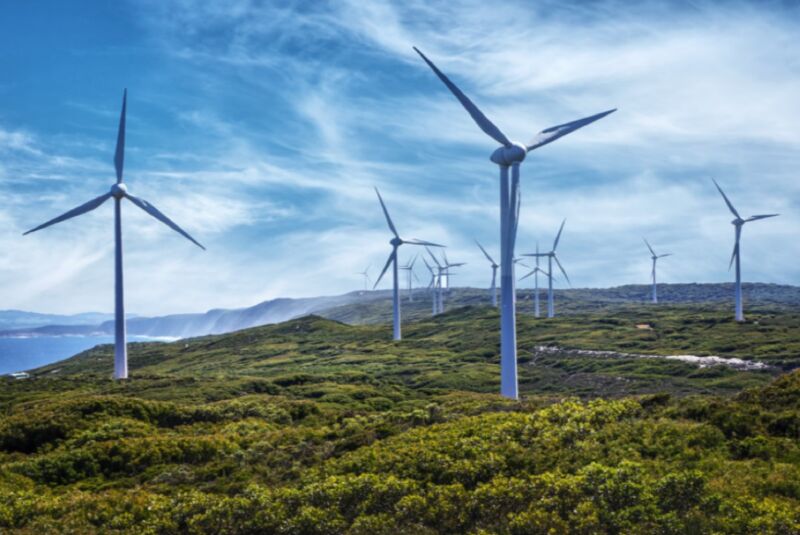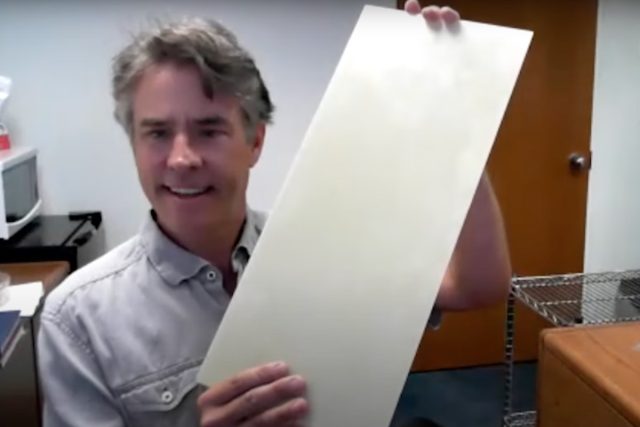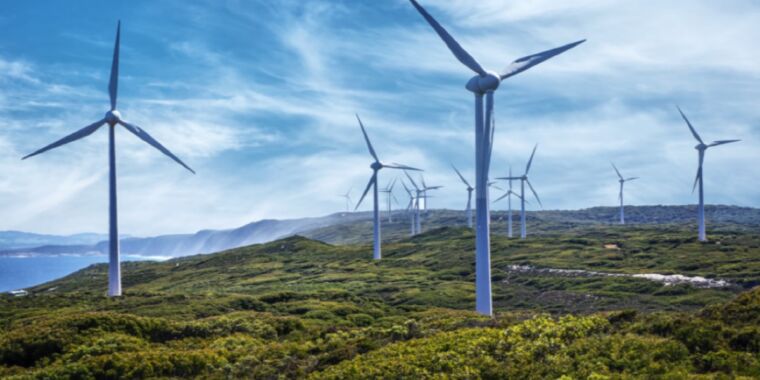
Imagevixen/Getty Images
Wind power is a rapidly growing industry, with a 53 percent increase in new installations in 2020 alone, according to the Global Wind Energy Council. The massive fiberglass blades can be as long as half of a football field and keep getting larger— the bigger the blade, the more electricity is produced. That poses a problem when the blades outlive the mechanical parts of the turbines. They’re usually sent to landfills, which undercuts the whole concept of sustainable energy production.
Fortunately, John Dorgan, a chemical engineer at Michigan State University, has come up with a new polymer resin that can not only be recycled into a new generation of turbine blades but also materials for a wide range of commercial applications. These include the manufacture of car taillights, diapers, kitchen sinks—even edible gummy bears. He described his research at a meeting of the American Chemical Society in Chicago this week.
Dorgan terms his approach “molecular flexibility,” inspired in part by an article he once read by Isaac Asimov, describing a future where people would be able to resynthesize raw protons, neutrons, and electrons into anything they wanted. “It’s almost like the replicator from Star Trek, where they can just sort of make atoms into anything that they want—ice cream floats, or new clothing, or what have you,” said Dorgan during a press conference at the ACS meeting. “Of course, we’re a long way from the replicator idea, but we did draw some inspiration from those sorts of things.”
Dorgan has long worked with one of his favorite polymers: polyactides, or PLA, originally developed for making biodegradable, sustainable packaging. PLA can also be used as a fiber to make textiles and clothing. Dorgan’s current Department of Energy-funded project involves investigating how to make wind turbine blades in more energy-efficient ways. So naturally, he wondered whether PLA could be used as a recyclable binding resin.

YouTube/American Chemical Society
The Dorgan lab made their new composite resin by dissolving PLA in a synthetic monomer called methyl methacrylate (MMA), resulting in a syrupy resin. They used vacuum pressure to pull the resin through glass fibers, causing that resin to harden into solid fiberglass panels. Those panels can be recycled by dissolving them in fresh monomer, enabling the researchers to recast new panels for the next generation of wind turbines. “The holy grail in polymer recycling is always to go from an application back to the same application,” he said. “We can do that with these materials. We’ve gone through several cycles, and we’ve shown that the mechanical properties can be sustained.”
The next step is to make some moderate-sized turbine blades and test them in the field. But Dorgan admits his resin isn’t yet ready to scale up to the level required to meet the wind power industry’s current needs. There’s just not enough of the bioplastic produced by his lab-based process, and coming up with a large-scale production process will take some time.
Fortunately, it’s also possible to repurpose the resin for other applications, both downcycle and upcycle. For the former, take the material and shred it up, perhaps adding a bit more polymer into the mix, and it will be perfect for injection molding, a common manufacturing technique for plastics. Dorgan also produced an engineered stone, which he then used to make a full-sized kitchen sink, and the MSU Spartan logo.
-
The various possible applications for the new recyclable resin.
YouTube/American Chemical Society -
Dorgan’s lab made this Spartan logo out of engineered stone recycled from the resin.
YouTube/American Chemical Society -
Dorgan’s lab also cast this full-sized kitchen sink out of the engineered stone.
YouTube/American Chemical Society -
Dorgan displays a sample of a lightweight carbon fiber material made from his recycled resin.
YouTube/American Chemical Society -
Dorgan synthesized food-grade potassium lactate from the resin for homemade edible gummy bears.
Nodar Chernishev / EyeEm/Getty Images
Beyond that simple mechanical processing, Dorgan found that he could chemically modify these materials for more upcycle applications. “We can actually digest out one of the components of the PLA polymer using just a simple base, like an alkaline solution,” he said. “Think of baking soda or baking powder in the kitchen—something quite mild in terms of its chemical activity.”
This breaks the PLA down into an environmentally benign metabolite called monolactic acid, and enabled Dorgan to recover the polymethyl methacrylate (PMMA) in the material—more commonly known as plexiglass, used to make windows and car taillights. Raising the temperature can convert the PMMA into polymethacrylic acid, a super-absorbent polymer used in diapers. Another byproduct of the alkaline digestion is potassium lactate, which Dorgan was able to purify for food-grade applications. He even used it to make gummy bears in the lab.
And yes, he ate those gummy bears with no ill effects. “A carbon atom derived from a plant, like corn or grass, is no different from a carbon atom that came from a fossil fuel,” said Dorgan. “It’s all part of the global carbon cycle, and we’ve shown that we can go from biomass in the field to durable plastic materials and back to foodstuffs.”








